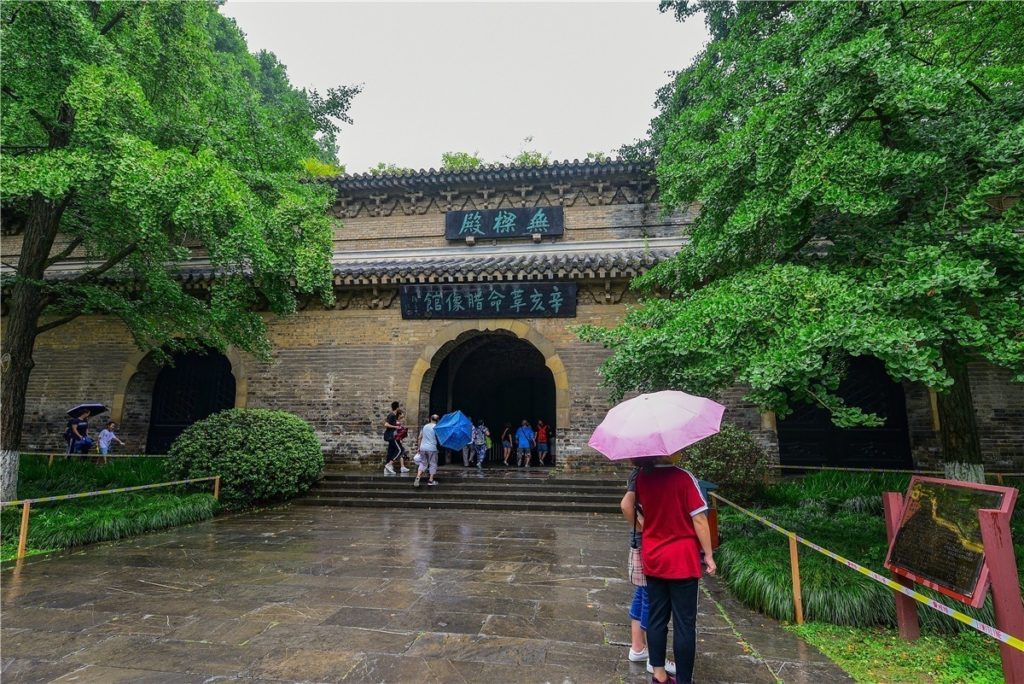
It took Zhu Yuanzhang 40 years to go from being a monk to the founding father of Ming Dynasty. In order to overthrow Yuan Dynasty, he had gone against the purpose of joining the Red Turban Rebelling in the first place. As a result, Zhu chose to take the initiative to start working with the landowners and undertake to protect their private property well.
In 1368, the ordinary people got another emperor with the name of Zhu. The dynasty thus changed dramatically, and the dictatorship continued. The only change was that the dictator offered new hope to the people.
As an emperor, Zhu Yuanzhang did one thing that many former emperors did and that was to build a tomb for himself. In traditional Chinese culture, they preach that people should return to their homeland after death. At the same time, the scale of the funeral represents the status that they deceased once held.

TRAVEL WITH HISTORY, THE BEST WAY TO LEARN MORE ABOUT HISTORY.
AMELIA EARHART
In 1381, Zhu Yuanzhang gave the order to build a mausoleum for himself. To reflect the status and dignity of the emperor, the tomb of Zhu Yuanzhang after his death is very luxurious. In addition to covering an area of 1.7 million square meters, the tomb was surrounded by armed forces to protect it from being ransacked.
It took 25 years for Ming Dynasty artisans to complete the order to build a mausoleum for their emperor. In other words, Zhu Yuanzhang’s tomb was constructed from the Hongwu period until the Yongle period. What’s more, the dynasty organized over 100,000 workers to build the Xiaoling Mausoleum.

First Occupant of Xiaoling Mausoleum
In 1382, Xiaoling Mausoleum had its first permanent resident, the Empress of Zhu Yuanzhang, named Empress Ma. She was the first wife of Zhu Yuanzhang and the woman Zhu Yuanzhang loved very much.
In the rebellion against Yuan Dynasty, Zhu Yuanzhang once offended his commander, leading to his arrest. While he was serving his sentence, his wife hid hot steamed buns under her clothes to the point of scalding her skin to make sure Zhu Yuanzhang could have enough to eat.
Because of Zhu Yuanzhang’s natural suspicion, such character defects became more severe after becoming emperor. To ease the conflict and confrontation between the emperor and his courtiers, the Empress Ma consistently pointed out what her husband was doing wrong.

In fact, without the help of his wife, Zhu Yuanzhang could hardly establish the Ming Dynasty in 1368.
As a result, after his wife’s death, Zhu Yuanzhang was so particularly heartbroken that he did not call any morning court for several days. In memory of her wife, Zhu Yuanzhang, named the tomb of Xiaoling Mausoleum.
Joint Grave of Zhu Yuanzhang and Empress Ma
Sixteen years later, Zhu Yuanzhang died. In accordance with Zhu’s wishes, he was buried with his wife. Thus, the Xiaoling Mausoleum in Nanjing is actually a couple’s tomb.
Although the Xiaoling Mausoleum was built in Ming Dynasty, it was also well preserved in Qing Dynasty. In order to alleviate ethnic conflicts, the Qing Dynasty enlisted the needs of the Han people.
Not only did they not destroy the Xiaoling Mausoleum, but they sent workers to repair it. In 1684, Emperor Kangxi personally worshipped Zhu Yuanzhang and his wife.

Nowadays, the Xiao Mausoleum has become a scorching, paid tourist attraction in Nanjing. The cost of the ticket is 70 RMB per person. In addition to a tour of the interior of the mausoleum, the Lower Horse Place, Shixiang Road, Zixia Lake, and Plum Hill are great places to visit. The best seasons to visit are spring and autumn, and bringing your family is the right choice.




